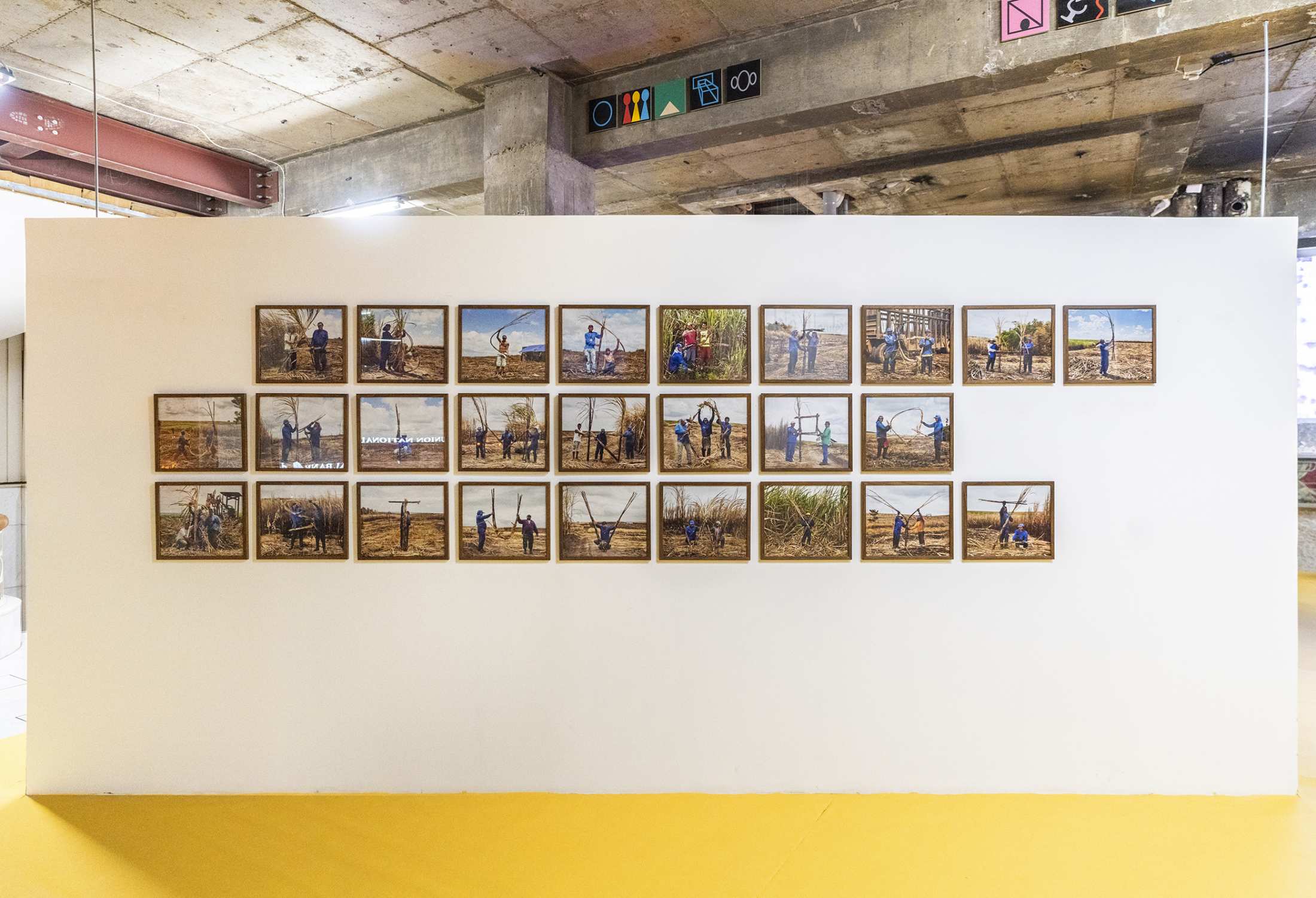ABC da Cana (Sugarcane ABC)
2014
26 framed pigment prints on Hahnemühle paper mounted on aluminum
For ABC da Cana, Jonathas de Andrade invited workers from the Tabu sugar refinery, located in Condado-PE, Brazil, to form the letters of the alphabet with sugarcane stalks. It was in this Northeastern region of Brazil — commonly known as the Nordeste — that the early Portuguese colonialists found soil and climate that was ideally suited for the cultivation of sugarcane. At great cost to the land and on the backs of many exploited, impoverished, or even enslaved people, sugarcane became one of the pillars of the Brazilian economy. De Andrade’s project was inspired by a pictorial alphabet created by Luis Jardim for the graphic design of the magazine Brasil Açucareiro in 1957, in which the graphic artist embellished uppercase letters with drawings of sugarcane plants or scenes from cane plantations and farms. While Jardim’s ornamental alphabet was a celebratory nod to an industry beneficial to the upper strata of society, de Andrade’s ABC da Cana is a photographic portrait of those people who suffer under its cultivation. Most sugar cane workers are illiterate, and so the act of shaping the ABC da Cana also has a pedagogical aspect to it.

